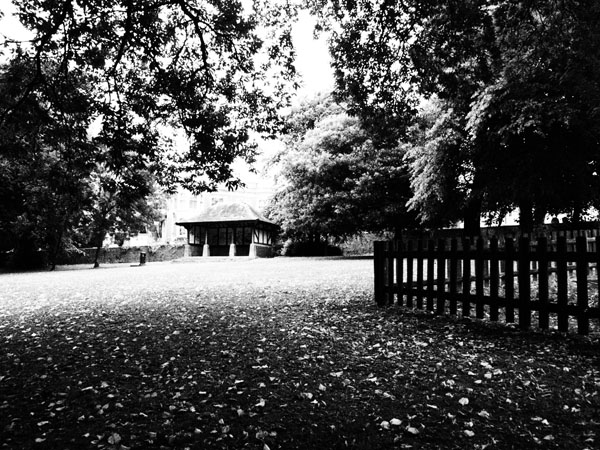Touted as the most affordable addition to the Olympus Micro Four Thirds camera range, today we’re going to be taking a look at the Olympus E-PL1. It’s an attractive piece of kit with a feature set to match, but let’s see how it stacks up in our in-depth review!

Background
The Olympus E-P1 and E-P2 were Olympus’s first Micro Four Thirds cameras. They drew heavily on Olympus’s film camera heritage and, in particular, the half-frame ‘Pen’ camera. A combination of retro styling and high-quality materials pushes up the price and makes these cameras attractive to well-heeled connoisseurs but probably outside the price range of ordinary enthusiasts.
But the E-PL1 offers pretty well all the features found on the other two cameras, adds a built-in flash and costs a whole lot less. This is the camera that cost-conscious photographers are going to be interested in because it competes head-on with entry-level digital SLRs and mirrorless hybrid cameras from other makers.
Design and Handling
The E-PL1′s cheaper build quality is obvious straight away. It has a lighter, more plasticky feel than the metal-bodied E-P1 and E-P2. It’s slightly less wide, but slightly taller, and the extra height accomodates a pop-up flash unit at the left end of the top-plate.

On a compact digital camera, this might be irritating because this is right where you want to put your left index finger as you hold the camera. On the E-PL1, though, it’s less of a problem because your left hand is more likely to be cradling the lens.
The main mode dial has a pretty basic, functional look to it, but it has firm click-stops for the program AE, aperture-priority, shutter-priority and manual exposure modes, plus the movie mode, scene modes, art filter and iAuto settings.

The controls on the back look very plain and do have a somewhat cheap feel. Perhaps this is deliberate, in order to distance the E-PL1 from the more prestigious E-P1 and E-P2 models.
Actually, though, they do a very good job. There’s no control dial on this camera, so all adjustments are carried out with the four directional buttons and the central ‘OK’ button. Does this slow things down at all? Not really. The buttons are clearly labelled and have a positive action, and the advantage of this simple control system is that the E-PL1 is very straightforward and logical to use.
The four directional buttons act as short-cuts to the exposure compensation, flash mode, drive mode and autofocus settings and, if you press the central ‘OK’ button instead, the camera displays an on-screen menu overlay which lets you change the ISO, white balance, metering pattern and other common camera settings very quickly.
The more expensive E-P1 and E-P2 models have a more elaborate twin-dial control layout, but the E-PL1′s directness and simplicity is actually a lot more effective.
There’s a button on the back for shooting movies directly, whichever mode the camera’s in, though you’ll need to switch to continuous AF mode first if you want the camera to keep focussing while you’re filming. For more control over your movies, you turn the mode dial to the movie setting, where you can select a range of options including art filters and manual exposure control.
Again, all these adjustments are made using the four-way navigation buttons, and it’s so straightforward that you could start wondering whether cameras need control dials at all.
The Lens

The 14-42mm kit lens is less impressive, though. Optically, it’s fine, but it’s a ‘folding’ design which has to be unlocked before you can use it and then locked again when you put it away – note the ‘Unlock’ switch on the side of the lens in the picture above.
Presumably, Olympus has done this to make the camera more compact, but it does mean extra hassle when you want to use it. When the lens is locked, the camera is certainly much more compact, but when the lens is extended, it’s actually rather longer than most other kit lenses, and the folding mechanism itself does give it a distinctly loose feel. It doesn’t affect the performance, it just feels a bit weak.
This is not a cheaper version of Olympus’s 14-42mm Micro Four Thirds kit lens, by the way. It’s the same lens as the one supplied with the E-P1 and E-P2, though theirs may have a silver finish rather than black. Both are plastic, though.
Viewing and Focussing
The 2.7-inch LCD display is large enough, but it’s a shame Olympus doesn’t use one of the newer, high-resolution displays used by some of its rivals. 230,000 dots is adequate, but that’s all. The menus and icons look pretty crude too, especially when you compare the E-PL1′s interface to those on the latest D-SLRs from Nikon and Canon, for example.

There’s no viewfinder on this camera, but you can get a clip-on external viewfinder. This attaches to the camera’s accessory port on the back.
The autofocus isn’t that impressive either, at least not compared to Panasonic’s Micro Four Thirds cameras. There’s a lot of to-ing and fro-in as it zeroes in on the right focus point, even if the focus distance has hardly changed since the last shot you took.
Interestingly, one of the E-PL1 bundles includes an Olympus 40-150mm Four Thirds lens originally designed for Olympus’s digital SLRs. It fits on to the camera using an adaptor supplied with the kit, and this adaptor blends in so well wit the finish of the lens and the camera that you’ll quickly forget it’s there.

The 40-150mm lens’s autofocus is quite fast and smooth for a lens with this kind of range (equivalent to 80-300mm) and it’s light and easy to handle, though ours had a slight roughness in the zoom action which didn’t affect the performance. It does demonstrate how readily you can use Four Thirds lenses on these Micro Four Thirds bodies, though it doesn’t work the other way round – you can’t use a Micro Four Thirds lens on a Four Thirds SLR.
The E-PL1 has in-camera image stabilisation which should help cut camera shake with longer lenses like this one, though it doesn’t have the visual stabilising effect of lens-based systems. What this means is that the image still jitters about on the LCD as you take the shot, and this can make it harder to frame long-range subjects accurately.
Manual focussing is a bit of a weak point with Micro Four Thirds cameras too. These lenses don’t have distance scales, and it’s much harder to judge sharp focus on an LCD display than it is with the optical viewfinder of an SLR.
Picture Quality
The E-PL1 uses the same sensor and lenses as the E-P1 and E-P2 models, and there’s really no visible difference in the image quality. The Four Thirds/Micro Four Thirds sensor is smaller than the APS-C format sensors in most digital SLRs, but this doesn’t seem to make any difference to the definition, and the E-PL1 is suprisingly good at high ISOs, too.
The 334-zone ESP multi-pattern metering system seems to do a good job in a wide variety of conditions, including this scene with a bright, overcast sky and and deep shadows. The E-PL1′s i-Enhance feature helped it along by brightening the shadowed areas. There is some purple fringing around the leaves and the treetrunk, but considering the degree and strength of the backlighting, it’s not that much.
This i-Enhance feature adjusts the colours as well as the exposure, and it’s really heightened the depth and saturation of this commemorative plaque. The 14-42mm kit lens focusses right down to 0.25m, which is constant across the focal range, so it’s pretty good for close-ups like the one above.
But while this lens is sharp at shorter focal lengths, it does seem to lose definition at full zoom. The shot above was taken at 42mm, and the definition’s not that good. The slightly softness is unlikely to be down to camera shake since the shutter speed was 1/160sec.
The Art filters are effective, though, and the Grainy Film, Pop Art and Pin Hole effects are the strongest. It’s odd, though, that these are applied using a separate exposure mode. Wouldn’t it make more sense to be able to apply the filters whichever mode you were shooting in?
The Grainy Film filter used here is particularly striking. The grain effect is quite ‘digital’ and pixellated when you look at it up close, but from normal distances it looks fine. The huge contrast increase applied by this filter makes it a bit of a handful in contrasty lighting, and you have to accept that you’re likely to lose highlight detail, shadow detail or both, but if you pick your subjects carefully the graphic effect is powerful, and reminiscent of push-processed black and white film.
The Pop Art filter eally does make colours ‘pop’. It doesn’t work so well on natural subjects, which just come out looking overintensified and artificial, but for man-made subjects it can be really effective.
Some might find the Pin Hole filter (above) a little strong, but this too is very good at evoking a specific type of camera and mood. The heavy corner vignetting is only part of the effect – the filter also seems to increase the contrast and add a subtle warm/sepia tone to the image.
The E-PL1 offers all the manual controls of a digital SLR and pretty much the same level of image quality too. The 14-42mm kit lens might not be the best, but it’s pretty good as kit lenses go, and thanks to Olympus’s Four Thirds adaptor it’s possible to use not only the Micro Four Thirds lenses designed for this camera but Olympus’s back-catalog of digital SLR lenses too, and many of these are very good indeed.
Shooting Movies
Not every photographer wants to shoot movies, but it’s worth mentioning the E-PL1′s movie mode anyway because it does a lot more than you might expect. The Olympus shoots at standard HD 1280 x 720 resolution, but then cameras which can shoot full HD at 1920 x 1080 pixels aren’t that common anyway, full HD footage takes up a lot of space and requires more processing power to edit and, for most of us, the extra quality isn’t really necessary.
But anyway, the point about the E-PL1 is that it can shoot movies in fully-automated program AE mode or with full manual control over shutter speed, lens aperture and ISO. Throw in the fact that you can use manual focus and any number of interchangeable lenses, and it becomes apparent that the E-PL1 is also a real enthusiasts video camera too.
The E-PL1 Versus the Rest
The E-PL1 is affordable, takes good pictures and offers plenty of potential for keen photographers, but this section of the market is expanding rapidly, and it has plenty of competition.
It stacks up well against the Olympus E-PL1 and E-PL2 models because it does more or less everything that they do, adds a built-in flash and costs a whole lot less. But compared to the Panasonic GF1, it does feel a bit crude. The finish isn’t as good, the autofocus is slower and its expanding/collapsing lens is just a nuisance.
You can’t really count Panasonic’s other Micro Four Thirds model or the Samsung NX10 because although they are mirrorless hybrid cameras too, they’re styled like digital SLRs rather than compacts.
But the E-PL1 is also up against the new Sony NEX-3 and NEX-5. These are interesting because they use a larger APS-C sized sensor but the bodies are even smaller than the Olympus’s. The chief drawback with these cameras, though, is that the control layout is designed very much with novices and compact camera users in mind. Anyone hoping for the hands-on manual control of a digital SLR is going to be disappointed. The picture quality from these Sonys is great, but the E-PL1 is a better camera for enthusiasts.
Verdict
The Olympus E-PL1 is substantially cheaper than the more prestigious E-P1 and E-P2 models, and it really does feel it. At the same time, though, a more basic, simplified approach is very effective.
It does everything that its more expensive stablemates do, but in a more straightforward manner – and it has that built-in flash, which they don’t. If you’re looking for SLR-style control in a compact camera form, and you want value for money rather than prestige and style, it’s an excellent choice.
Pros
- Value for money
- Straightforward controls
- Lens choice (with Four Thirds adaptor)
- HD video and manual control
Cons
- Low-cost build quality
- Fiddly expanding/collapsing 14-42mm kit lens
- Sluggish autofocus





